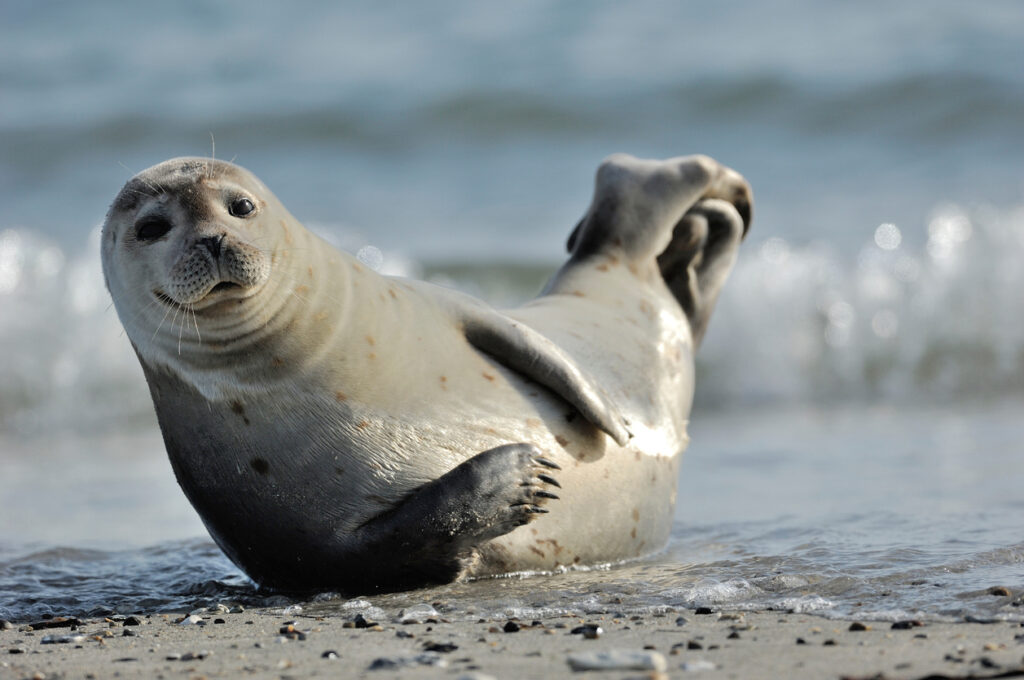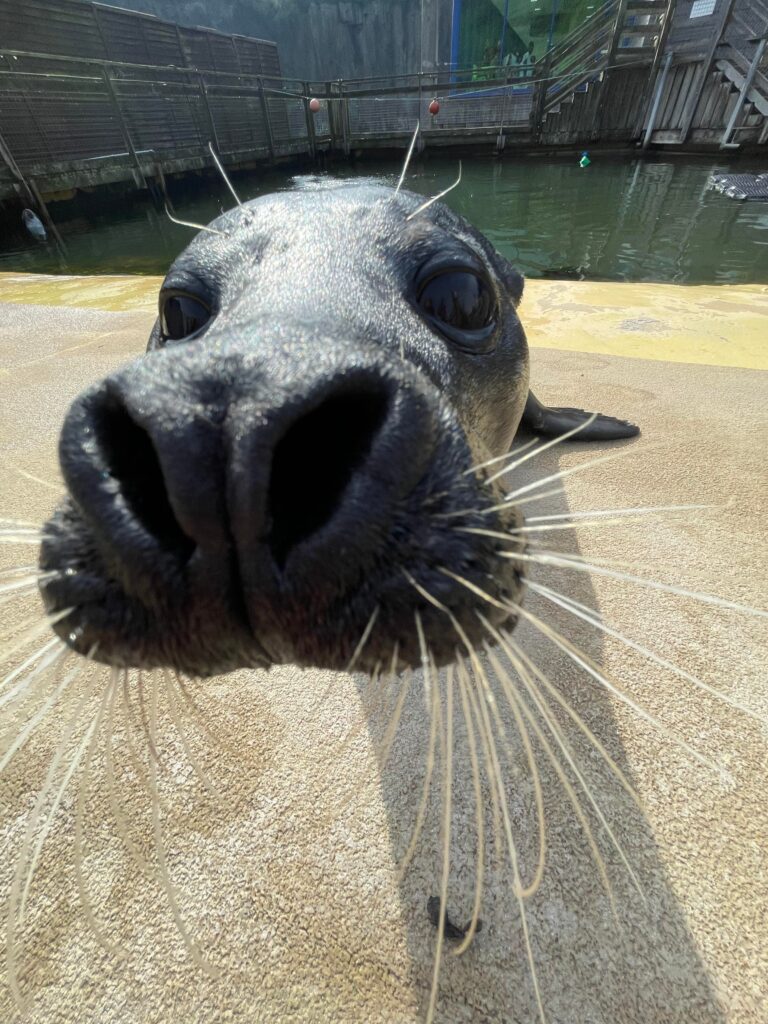Scotland’s coastline is not only beautiful but also home to an array of fascinating wildlife. One of the most enchanting experiences for nature enthusiasts is seal spotting.
The shores of Scotland are populated by two distinct species of seals, the common seal and the grey seal. In this guide, we will explore their characteristics, differences, and the best places and times to spot these marine mammals.
What types of seals are there in the UK?
The United Kingdom is privileged to host two main types of seals: the common seal (Phoca vitulina) and the grey seal (Halichoerus grypus). These creatures are well adapted to the cold waters surrounding the British Isles, each with its unique set of features and behaviours.
The common seal, also referred to as the harbour seal, is recognised by its distinctive V-shaped nostrils.

Common seals typically prefer sandy beaches and estuaries, making them a common sight in such habitats. Common seals also have a lifespan of around 25 to 30 years.
On the other hand, the grey seal is the larger of the two species. They are easily distinguishable by their horse-like head shape and larger size compared to the common seal.
Grey seals have a preference for rocky shores and islands, where they spend time relaxing and giving birth to their pups. The larger of these two creatures can live up to 35 years.
Common seal vs. grey seal: What’s the difference?
To the untrained eye, common seals and grey seals might appear similar, but there are notable differences that can help identify each species.
In terms of facial features, common seals have a shorter, more dog-like snout, while grey seals boast a longer, horse-like profile. The eyes and chin of the two species also differ, with common seals having larger eyes and a more pronounced chin compared to their grey seal counterparts.
Male and female differences are evident in size, with male grey seals being significantly larger than females, while common seals exhibit less pronounced size variations. When it comes to appearance, common seals often have a speckled coat, and their pups are born with white fur that is shed after a few weeks. Grey seals, in contrast, display a more uniform colouration, with pups being born with a white coat that lasts significantly longer.
Size-wise, grey seals are the larger of the two, with males weighing up to 300 kilograms and reaching lengths of around 2.5 meters! Common seals are comparatively smaller, with males weighing up to 150 kilograms and reaching lengths of about 1.85 meters, so still pretty big!
Where are the most popular places in Scotland to see seals?
Scotland’s coastline offers numerous opportunities to witness these magnificent creatures in their natural habitat. Some of the most popular seal-spotting destinations include Newburgh Beach, renowned for its common seal colonies, the Moray Firth, where both common and grey seals can be seen, and the Isle of May, an important area for seals mating.

When is the best time to go seal spotting?
Timing is crucial when it comes to seal spotting, and understanding the breeding seasons of these seals can make the experience more enjoyable. Harbour seal pups are born from May to July, while grey seal pups make their debut in the autumn months. Autumn is considered the optimal season for seal spotting in Scotland, as the water conditions are favourable, and the abundance of food keeps the seals close to the shores.
Considerations to take when seal spotting
As we venture into the world of seal spotting, it is essential to prioritise the well-being of these creatures. To ensure a positive experience for both humans and seals, here are some key considerations:
Don’t get too close: Maintain a respectful distance to avoid causing distress to the seals.
Don’t feed them: Feeding wild seals can disrupt their natural diet, leading to potential health issues.
Keep dogs on a lead: Unleashed dogs can be perceived as threats by seals, causing unnecessary stress. Keeping dogs on a lead helps protect both the seals and your pets.
Seal spotting in Scotland is an enriching experience that allows us to connect with nature and witness some of the beauty of marine life.
By understanding the differences between common seals and grey seals, knowing the best times and places for spotting, and adopting responsible viewing practices, we can contribute to the conservation of these magnificent creatures.
If you’d like to see some beautiful seals out of season (or in it), along with countless other beautiful sea creatures, book your tickets for Deep Sea World today.
